Showing Spotlights 257 - 264 of 639 in category All (newest first):
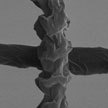 The successful implementation of graphene-based devices invariably requires the precise patterning of graphene sheets at both the micrometer and nanometer scale. Finding the ideal technique to achieve the desired graphene patterning remains a major challenge. Researchers have now demonstrated 3D printed nanostructures composed entirely of graphene using a new 3D printing technique. The method exploits a size-controllable liquid meniscus to fabricate 3D reduced graphene oxide nanowires.
The successful implementation of graphene-based devices invariably requires the precise patterning of graphene sheets at both the micrometer and nanometer scale. Finding the ideal technique to achieve the desired graphene patterning remains a major challenge. Researchers have now demonstrated 3D printed nanostructures composed entirely of graphene using a new 3D printing technique. The method exploits a size-controllable liquid meniscus to fabricate 3D reduced graphene oxide nanowires.
Nov 27th, 2014
 The food chemistry Maillard reaction is responsible for many colors and flavors in foods - roasting of coffee, baking of bread and sizzling of meat. Scientists have made use of this ingenious food chemistry to 'cook' their copper nanowires. This green approach that formulates copper atoms in water to form untangled metallic state nanowires. Naturally, a lingering chocolate-like aroma was detected during the copper nanowires synthesis.
The food chemistry Maillard reaction is responsible for many colors and flavors in foods - roasting of coffee, baking of bread and sizzling of meat. Scientists have made use of this ingenious food chemistry to 'cook' their copper nanowires. This green approach that formulates copper atoms in water to form untangled metallic state nanowires. Naturally, a lingering chocolate-like aroma was detected during the copper nanowires synthesis.
Nov 21st, 2014
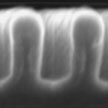 In recent years, polymer solar cells have drawn considerable research interest due to their attractive features including flexibility, semi-transparency, and manufacturability using cost-effective continuous printing processes. However, one challenge limiting their commercialization is the relatively low power conversion efficiency when compared to inorganic solar cells. New work shows that low bandgap polymer solar cells with high efficiency of 5.5% can be fabricated using nanoimprint lithography.
In recent years, polymer solar cells have drawn considerable research interest due to their attractive features including flexibility, semi-transparency, and manufacturability using cost-effective continuous printing processes. However, one challenge limiting their commercialization is the relatively low power conversion efficiency when compared to inorganic solar cells. New work shows that low bandgap polymer solar cells with high efficiency of 5.5% can be fabricated using nanoimprint lithography.
Nov 12th, 2014
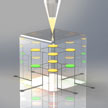 Researchers have demonstrated that they can print interwoven structures of quantum dots, polymers, metal nanoparticles, etc, to create the first fully 3D printed LEDs, in which every component is 3D printed. At the fundamental level, 3D printing should be entirely capable of creating spatially heterogeneous multi-material structures by dispensing a wide range of material classes with disparate viscosities and functionalities, including semiconducting colloidal nanomaterials, elastomeric matrices, organic polymers, and liquid and solid metals.
Researchers have demonstrated that they can print interwoven structures of quantum dots, polymers, metal nanoparticles, etc, to create the first fully 3D printed LEDs, in which every component is 3D printed. At the fundamental level, 3D printing should be entirely capable of creating spatially heterogeneous multi-material structures by dispensing a wide range of material classes with disparate viscosities and functionalities, including semiconducting colloidal nanomaterials, elastomeric matrices, organic polymers, and liquid and solid metals.
Nov 5th, 2014
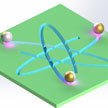 The complexity and high cost of the state-of-the-art high-resolution lithographic systems are prompting unconventional routes for nanoscale manufacturing. Inspired by natural nanomachines, synthetic nanorobots have recently demonstrated remarkable performance and functionality. Nanoengineers now have invented a new nano-patterning approach, named Nanomotor Lithography, which translates the autonomous movement trajectories of nanomotors, or nanorobots, into controlled surface features that brings a twist to conventional static optical fabrication systems.
The complexity and high cost of the state-of-the-art high-resolution lithographic systems are prompting unconventional routes for nanoscale manufacturing. Inspired by natural nanomachines, synthetic nanorobots have recently demonstrated remarkable performance and functionality. Nanoengineers now have invented a new nano-patterning approach, named Nanomotor Lithography, which translates the autonomous movement trajectories of nanomotors, or nanorobots, into controlled surface features that brings a twist to conventional static optical fabrication systems.
Oct 28th, 2014
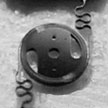 Researchers have demonstrated ultra-stretchability in monolithic single-crystal silicon. The design is based on an all silicon-based network of hexagonal islands connected through spiral springs. The resulting single-spiral structures can be stretched to a ratio more than 1000%, while remaining below a 1.2% strain. Moreover, these network structures have demonstrated area expansions as high as 30 folds in arrays. This method could provide ultra-stretchable and adaptable electronic systems for distributed network of high-performance macro-electronics especially useful for wearable electronics and bio-integrated devices.
Researchers have demonstrated ultra-stretchability in monolithic single-crystal silicon. The design is based on an all silicon-based network of hexagonal islands connected through spiral springs. The resulting single-spiral structures can be stretched to a ratio more than 1000%, while remaining below a 1.2% strain. Moreover, these network structures have demonstrated area expansions as high as 30 folds in arrays. This method could provide ultra-stretchable and adaptable electronic systems for distributed network of high-performance macro-electronics especially useful for wearable electronics and bio-integrated devices.
Oct 21st, 2014
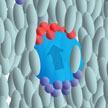 Impurities during the production process of liquid crystal devices result in mobile ions that influence the LCs' field-induced switching phenomena, resulting in a phenomenon called image sticking, or ghosting. Researchers now have developed a method to reduce the presence of excess ions by doping LCDs with ferroelectric nanoparticles. They demonstrate that this reduction of free ions has coherent impacts on the LC's conductivity, rotational viscosity, and electric field-induced nematic switching.
Impurities during the production process of liquid crystal devices result in mobile ions that influence the LCs' field-induced switching phenomena, resulting in a phenomenon called image sticking, or ghosting. Researchers now have developed a method to reduce the presence of excess ions by doping LCDs with ferroelectric nanoparticles. They demonstrate that this reduction of free ions has coherent impacts on the LC's conductivity, rotational viscosity, and electric field-induced nematic switching.
Oct 16th, 2014
 3D-printing processes are engineered to use material more efficiently, give designs more flexibility and produce objects more precisely. These 3D printing techniques are reaching a stage where desired products and structures can be made independent of the complexity of their shapes. Applying 3D printing concepts to nanotechnology could bring similar advantages to nanofabrication - speed, less waste, economic viability - than it is expected to bring to manufacturing technologies. here we show examples of current research into 3D printing in nanotechnology.
3D-printing processes are engineered to use material more efficiently, give designs more flexibility and produce objects more precisely. These 3D printing techniques are reaching a stage where desired products and structures can be made independent of the complexity of their shapes. Applying 3D printing concepts to nanotechnology could bring similar advantages to nanofabrication - speed, less waste, economic viability - than it is expected to bring to manufacturing technologies. here we show examples of current research into 3D printing in nanotechnology.
Sep 26th, 2014
 The successful implementation of graphene-based devices invariably requires the precise patterning of graphene sheets at both the micrometer and nanometer scale. Finding the ideal technique to achieve the desired graphene patterning remains a major challenge. Researchers have now demonstrated 3D printed nanostructures composed entirely of graphene using a new 3D printing technique. The method exploits a size-controllable liquid meniscus to fabricate 3D reduced graphene oxide nanowires.
The successful implementation of graphene-based devices invariably requires the precise patterning of graphene sheets at both the micrometer and nanometer scale. Finding the ideal technique to achieve the desired graphene patterning remains a major challenge. Researchers have now demonstrated 3D printed nanostructures composed entirely of graphene using a new 3D printing technique. The method exploits a size-controllable liquid meniscus to fabricate 3D reduced graphene oxide nanowires.
 Subscribe to our Nanotechnology Spotlight feed
Subscribe to our Nanotechnology Spotlight feed





